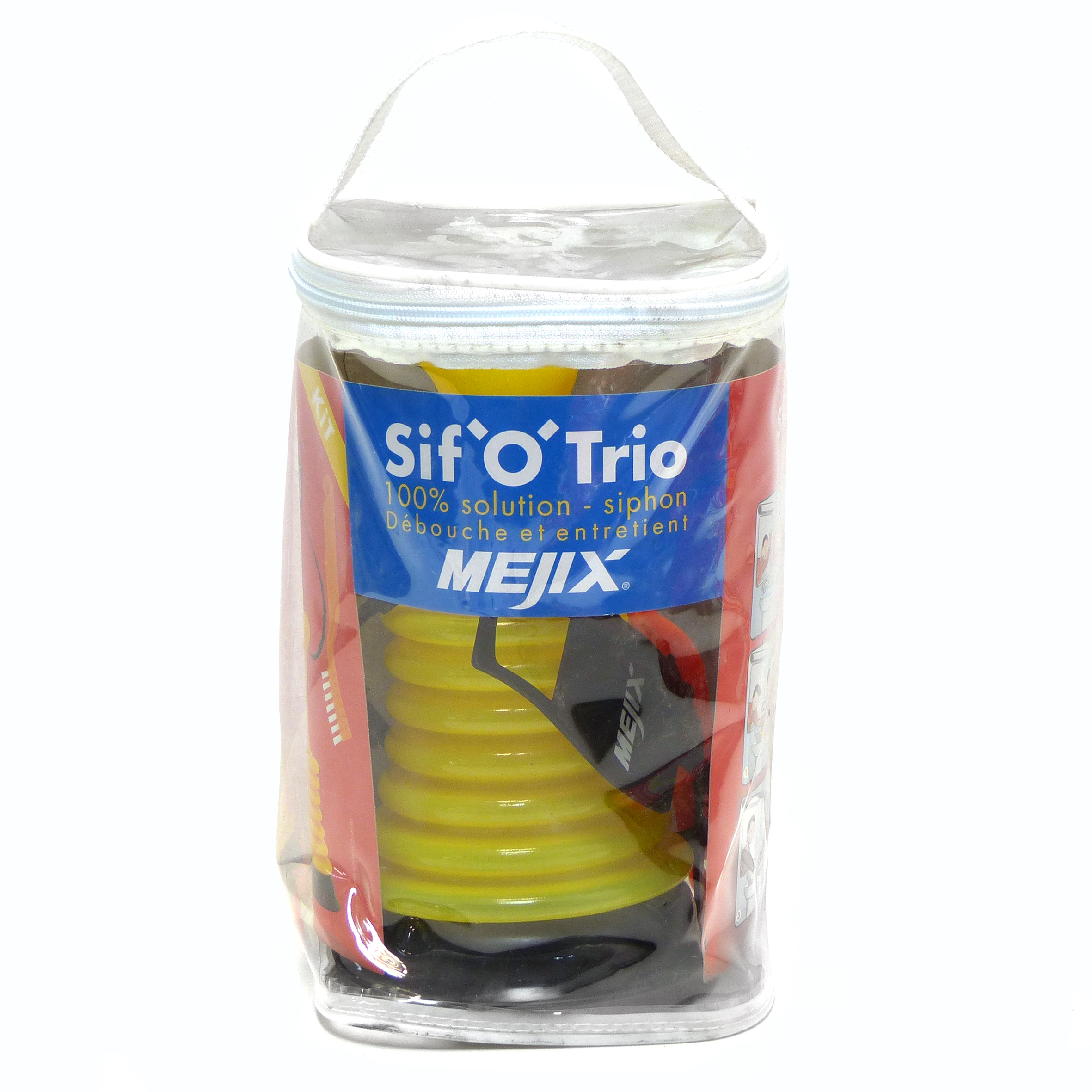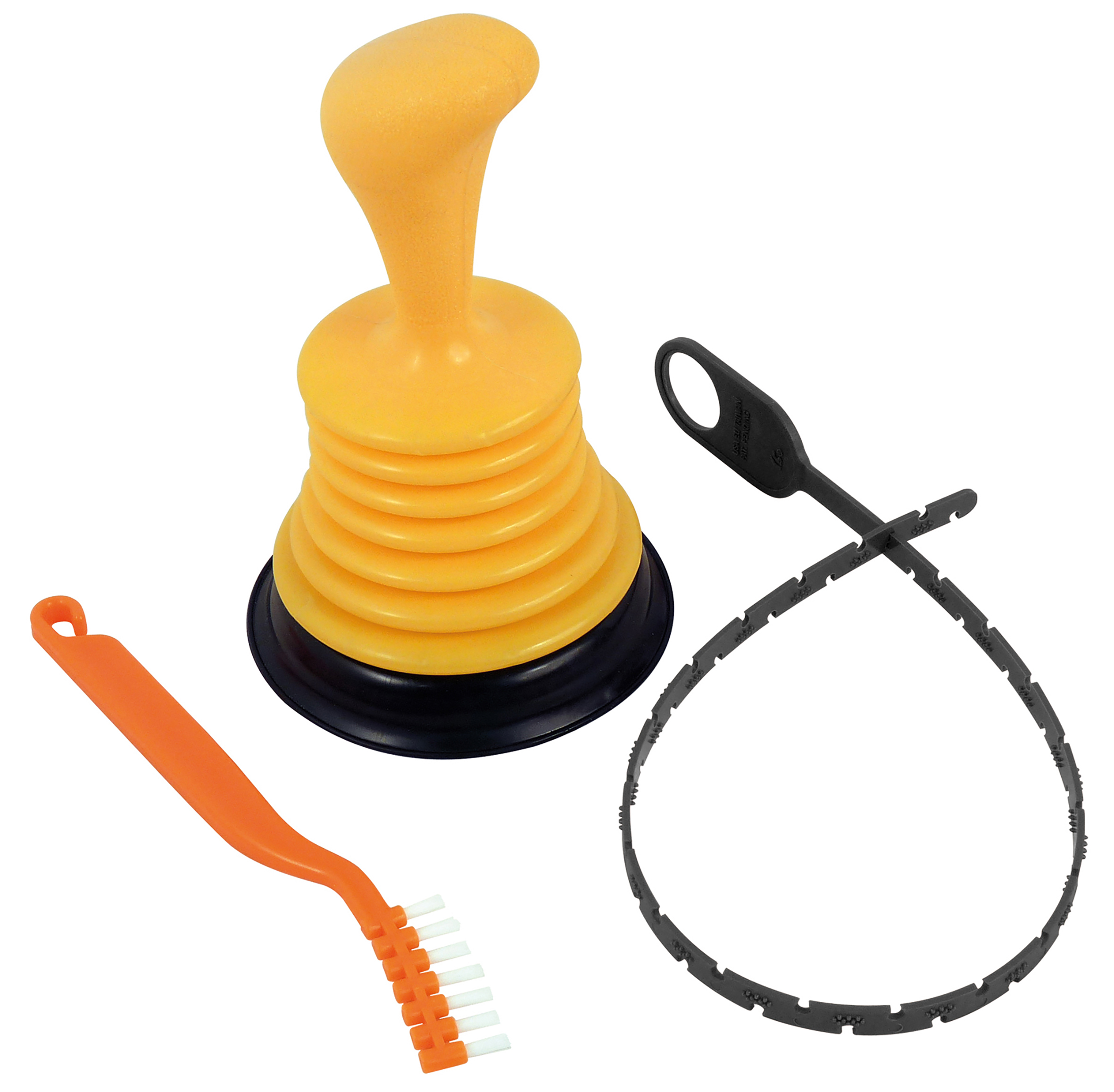UNCLOG YOUR PIPES
DRAIN CLEANERS WITH CRANK PROVIDES ECOLOGICAL & FAST CLEANING
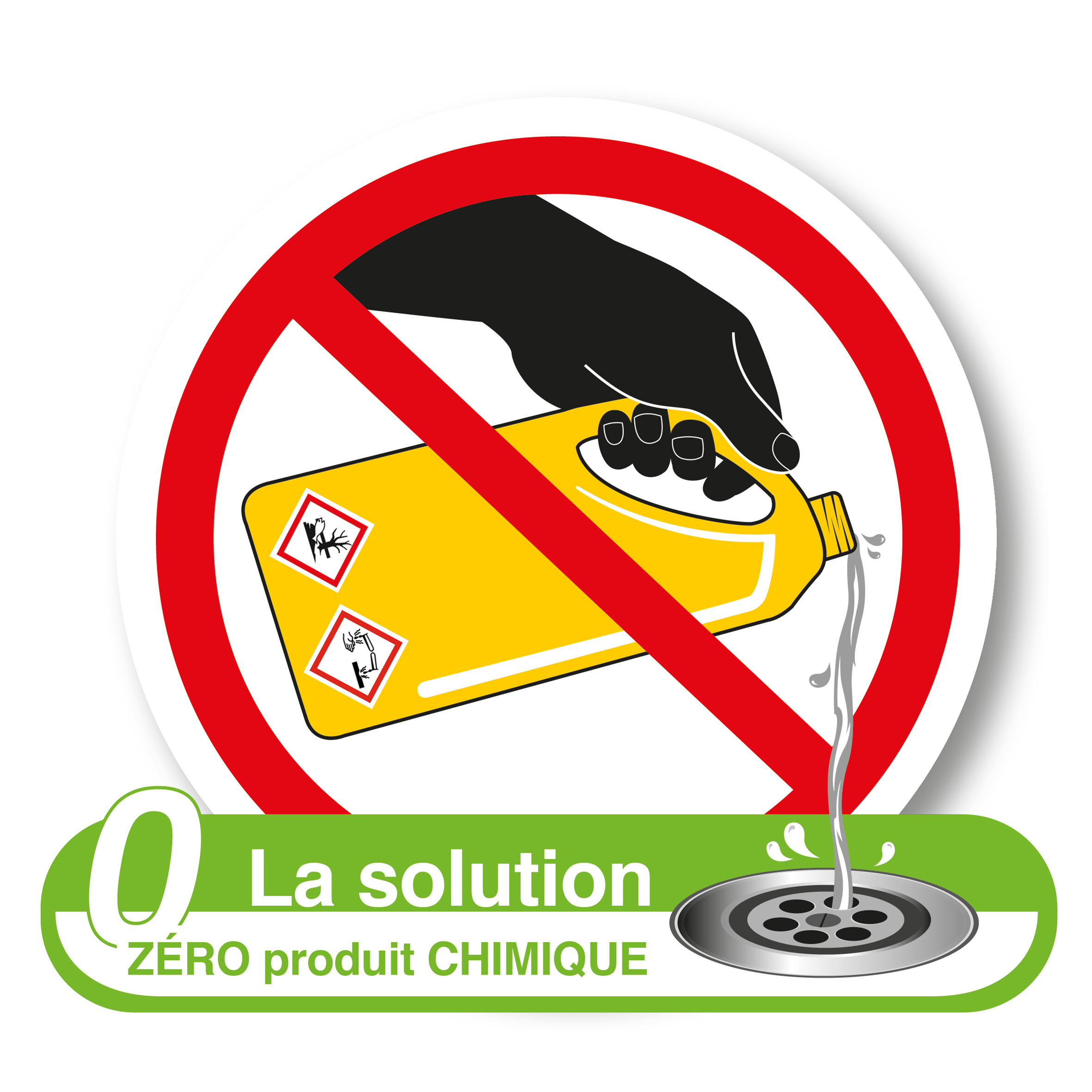
A plugged pipe is often due to the accumulation of dirt in the siphon. Usually, removing and cleaning up the siphon is enough to unplug a sink. If the sink still does not drain the water properly, after a while, a plug is stopping the pipe, beyond the siphon.
Do not use chemicals products, cause it is damaging the environment and your own health.
In fact, drain cleaners may contain sodium hypochlorite (component of bleach) and soda (sodium or potassium hydroxide) in concentrations that can reach at least 50%. Other corrosive products are the two-component, the two parts are mixed while pouring into the pipe. All these products are dangerous and polluting. Also be aware that all liquid drain cleaners can cause serious burns on skin and eyes.
There are many mechanical alternatives and therefore much more ecological:
First we find the well-known suction cup unblocker. An ancestral tool for unblocking, but still current and as effective as in the past, it remains a basic and universal solution for unblocking without a ferret. With its 130 mm suction cup and wooden handle, it will help you troubleshoot sinks and toilets with a minimum of effort.
How to use the suction cup with handle?
1- Fill the bottom of the sink so that the water covers the rubber of the suction cup,
2- Position the suction cup on the bung,
3- Press firmly then lift and lower the suction cup so that there is a call for air,
4- Repeat the movement until the sink is completely empty.
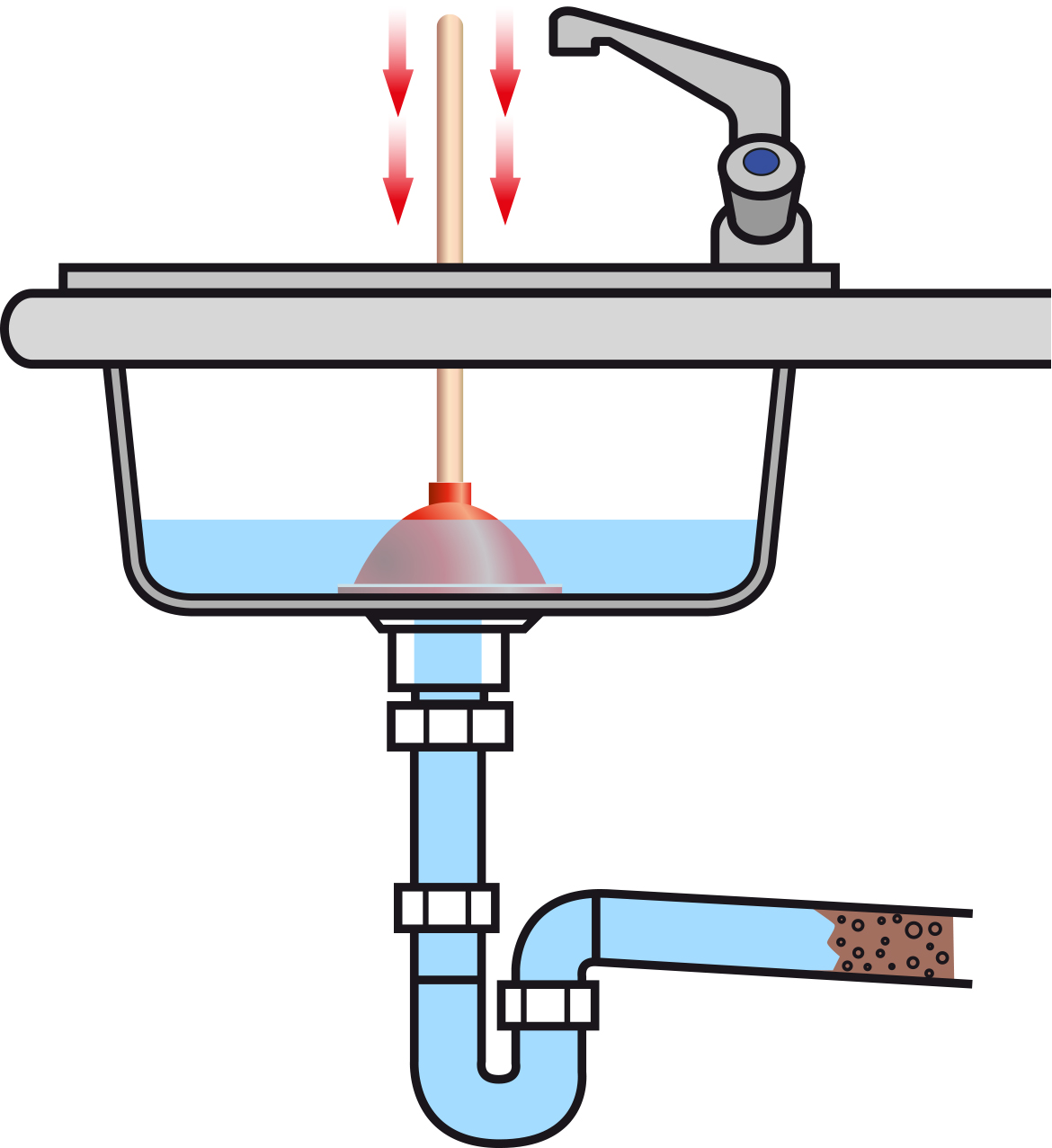
Less known to the public, but just as effective, the pressure cleaner is also very effective for small clogs and suitable for all types of washbasins or sinks, showers. It is also used for toilets, thanks to its interchangeable 150 mm suction cup. The unblocking operation is done effortlessly and without the need to disassemble the siphon.
How to use a pressure pipe cleaner?
1- Fill the bottom of the sink so that the water covers the rubber of the suction cup,
2- Position the suction cup on the bung,
3- Cap the overflow with a cloth or tape,
4- Operate the handle of the device until the pressure generated drives out the plug.
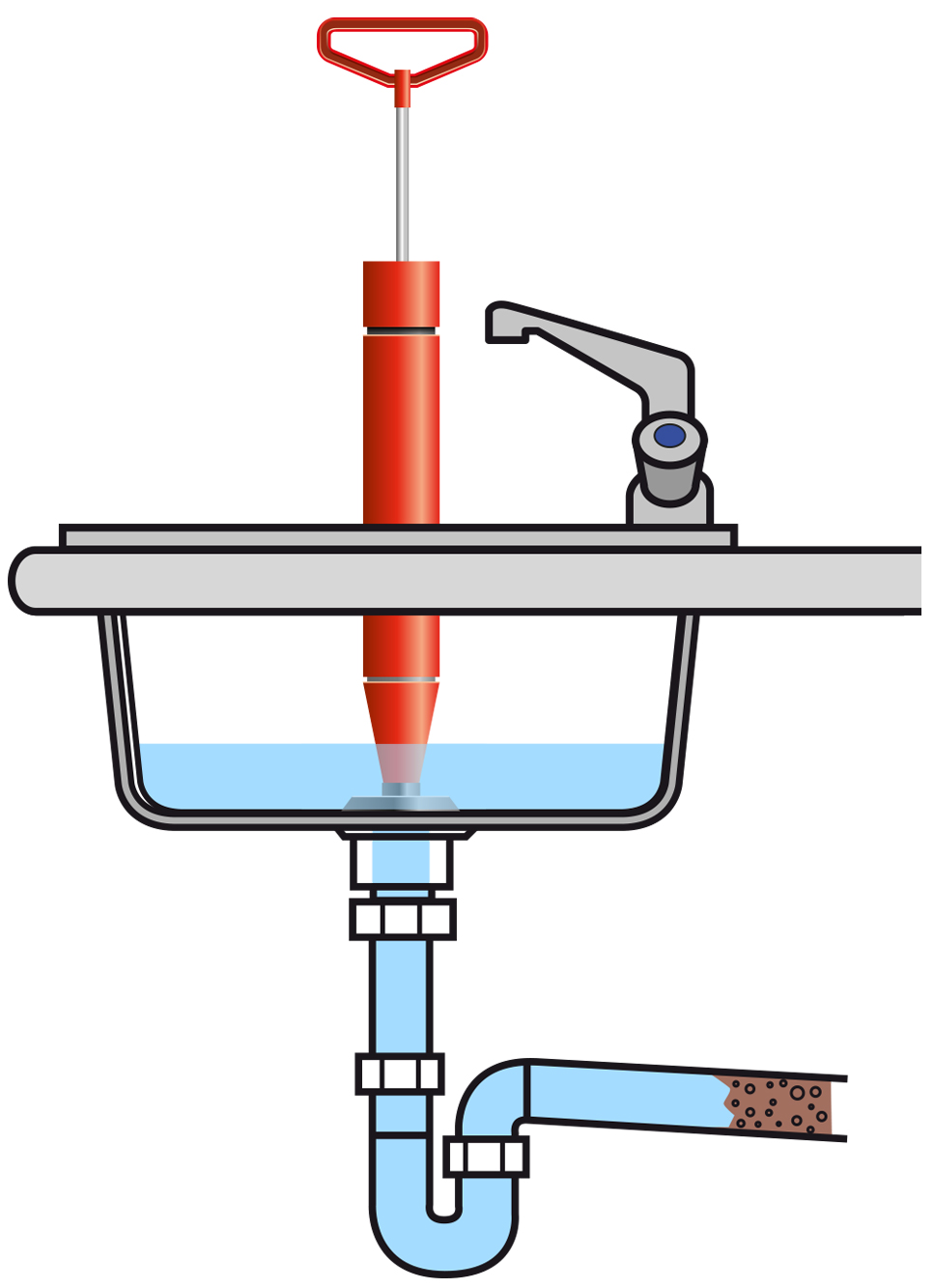
For very small plugs, you can use the Sif’O’Trio kit, which consists of a very effective accordion suction cup unblocker, a hair catcher and a brush to complete the cleaning of the siphon after operation. Without any special knowledge, it is easy to destroy a pipe plug. Small and discreet in its transparent vanity, it fits easily under a sink, always ready to intervene.
However, if the plug still does not come off, you will have to opt for a mechanical unblocker, called a crank, or a drum unblocker.
For the drum unblocker, which has a pistol-shaped grab handle, a 7.60 m hose and a crank, the principle remains similar to that of the manual ferret. The flexible cable is retained by a locking screw and wound inside the drum. This unblocker allows easy use regardless of the type of bending.
How to use a drum pipe cleaner?
1- Loosen the locking screw,
2- Pull the hose and insert it into the pipe up to the stopper,
3- Tighten the locking screw,
4- Turn slowly using the handle. Leave little free hose between the inlet of the pipe and the unblocker, to avoid twisting the hose,
If the unclogging head gets stuck on the plug, turn the hose in the opposite direction and repeat,
5- Once the operation is complete, clean the hose and bring it back manually to the tank.
How to use a crank wire pipe cleaner?
Always put on gloves and safety glasses to protect yourself before working. Easy to use, the drain cleaner allows you to unclog your pipe without using chemicals. Preferably go through the siphon, the introduction of the ferret’s head will be easier.
Drain cleaners can have several types of heads. In general, the most common are a spring shape, called «pigtail» and are available in several diameters, in particular 6, 20 or even 50 mm. It is also equipped with a crank, made of wood or plastic. All models respect the integrity of your pipes.
Stick your cleaner’s head into the obstructed pipe throught the siphon or sink drain.
As soon as you encounter a resistance, slowly turn the crank while maintaining thrust to destroy the plug and push any stuck debris back into your pipe system. When the snake slides freely, the plug is destroyed, you can remove the hose from the piping.
Then clean your cleaner’s head and wipe it dry.
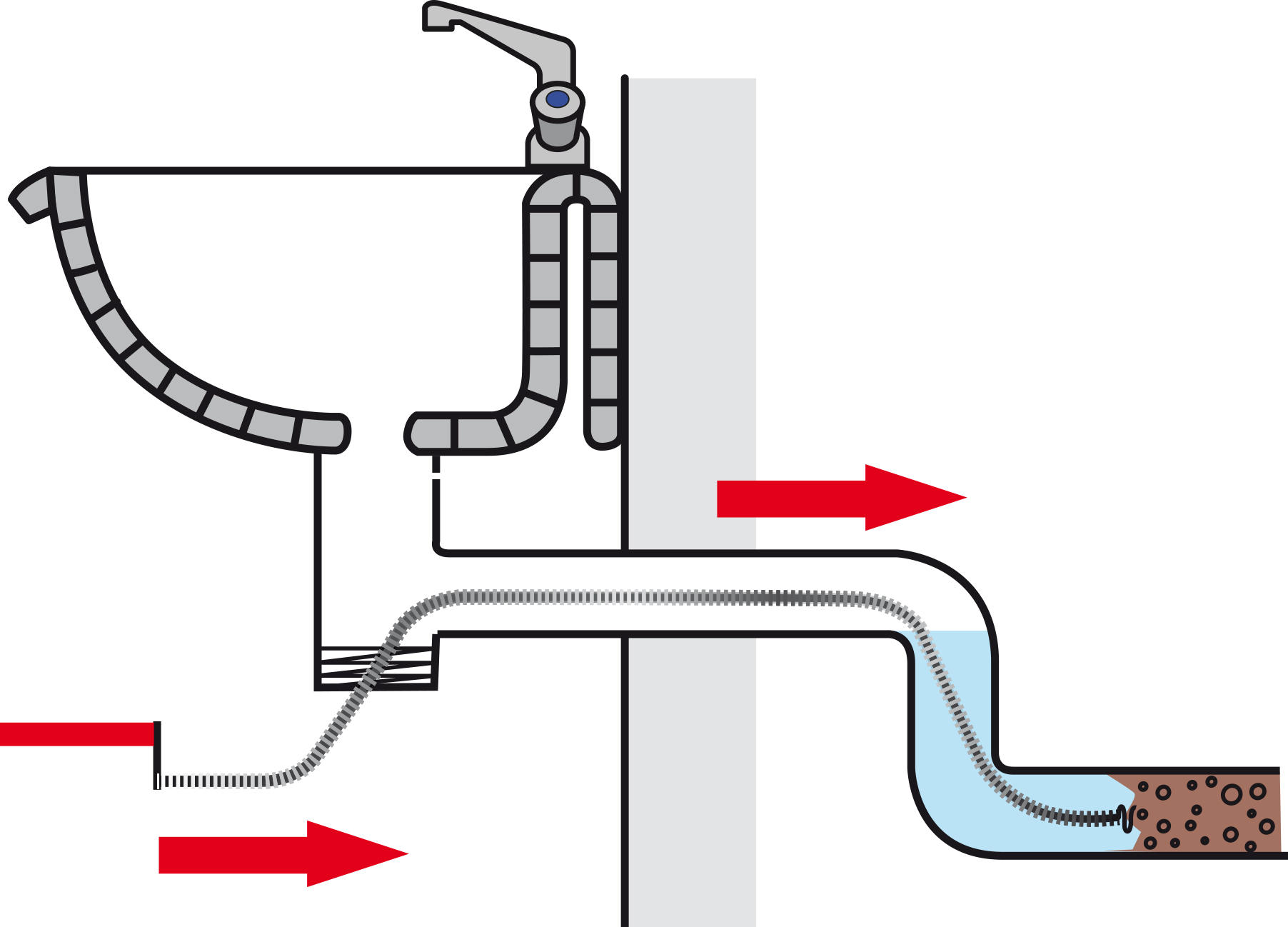
In the case of bent piping, the cleaner will be flexible enough not to block in the convolutions of the outlets. If the head gets stuck still, go back slightly and push the cleaner back.
Do not forget to reassemble your siphon with a siphon wrench. Beware of non-lined multigrip pliers, they will often damage the siphon clamping ring and make it impossible to reassemble.
After fixing the siphon, test the drainage of our sink or sink by running water.
Run your hand over the tubes and under the siphon to detect any leaks of water, for example from an improperly tightened siphon ring.
How to unclog a toilet?
Crank unblocker (removable):
To unclog your toilet by easily crossing the «S» siphon of the bowl. This tool is specialized for hard to reach places and it also helps prevent scratching the enamel of the toilets. Unclogging can be done in a standing position and the large crank makes it easy to rotate the tool for best results. Another advantage, it is removable in 2 separated parts for easy storage and transport.
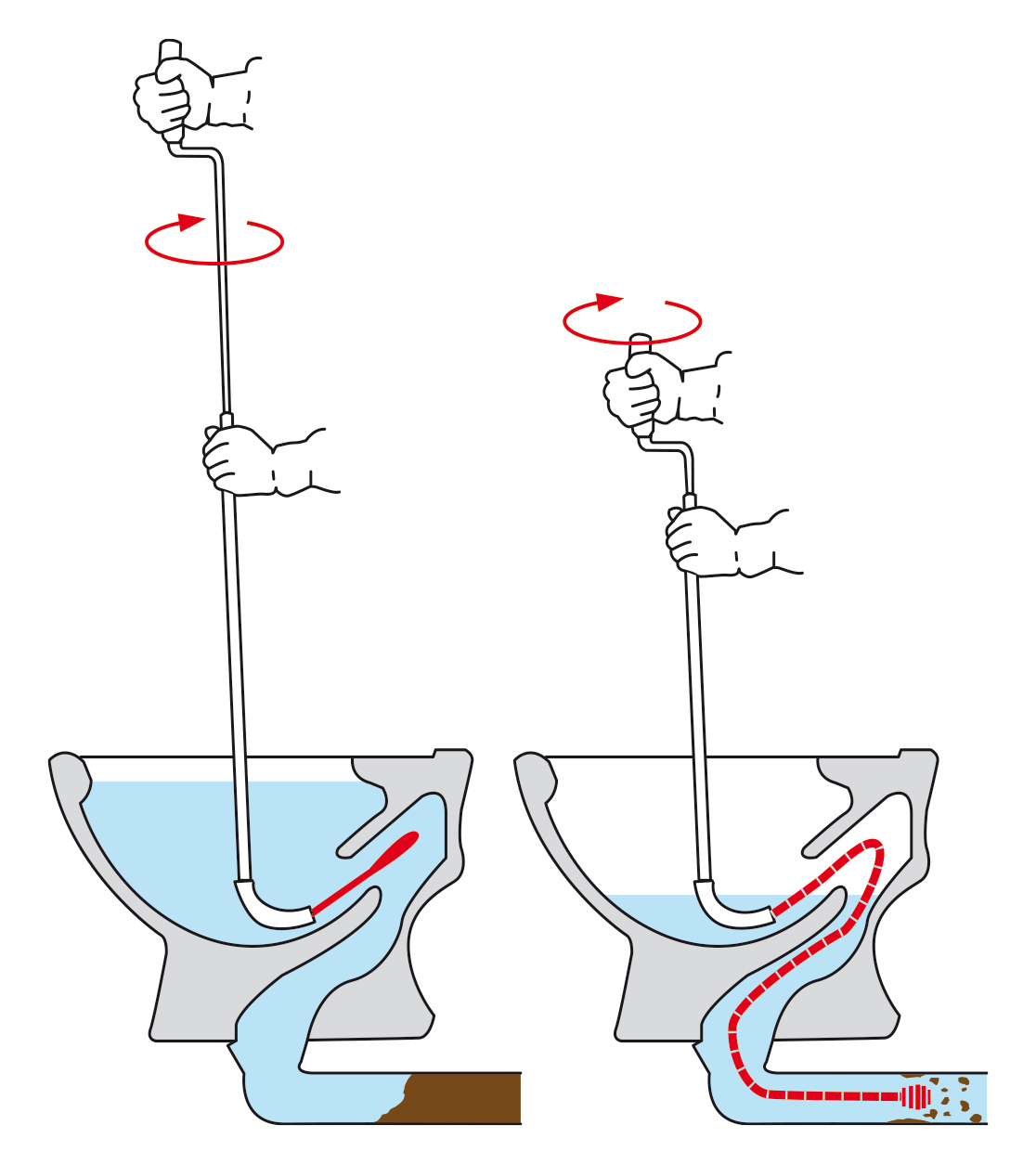
For what remains of the large drainage pipes, there is a model of steel drain cleaner specialized in large pipes, or gutters. With a length of 15 meters, it can therefore operate in completely outdoor inaccessible places and thus avoid a much more expensive external intervention.



